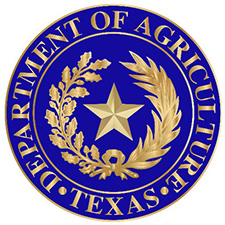(AgInsider) Public health experts are concerned about a possible resurgence of Covid-19 in food production plants this fall and say more comprehensive testing, physical distancing, and better data reporting are essential to keeping the virus in check, even as meatpackers insist that the worst of the pandemic has passed.
The outbreaks in the spring at meatpacking and food processing plants infected tens of thousands of workers and killed hundreds, causing many plant shutdowns. While the disease has not recurred at those levels, experts say there is still a risk of a resurgence despite the efforts taken by meatpackers to slow the spread of the virus.
Moreover, health experts say the sporadic illness data released by public health departments and food companies makes it difficult to assess how well precautionary workplace measures, like barriers between workers or periodic testing, have worked.
Meatpackers have assured the public in recent weeks that the worst of the virus’s effect on the food system has passed. The chief executive of JBS USA recently told the Wall Street Journal that he is “pretty confident” that plant closures due to Covid-19 outbreaks won’t happen again. The chairman of Perdue Farms said in an interview with Fox News that the company’s testing program is “having a positive effect on reducing the infection rate.”
Yet worker advocates say a recent drop in infections from the spring peak doesn’t necessarily project the virus’s future course.
“Our case counts are down, [but] I really don’t expect them to stay down,” says Mark Lauritsen, director of the food processing and meatpacking division of the United Food and Commercial Workers union, which represents more than 250,000 workers. “I expect the fall and winter we’ll see an uptick.”
USDA has been counting Covid-19 outbreaks, cases, and deaths in the food system for nearly six months. That data is drawn from news reports, public records requests, public health departments, and, occasionally, food companies. USDA has counted more than 71,000 worker cases and 321 deaths linked to nearly 1,400 Covid-19 outbreaks at meat and food plants and on farms.
The spring months saw the highest numbers of new worker cases reported, peaking in May with around 17,500 new infections. There was then a steady decline in new cases over the summer, with just over 15,000 added in July and around 5,000 added in August.
Yet after that summer dip, there are signs that new infections may rise again. More than 6,000 cases were added to FERN’s database in September, and nearly half came in the final week of the month. However, a high percentage of the new cases reported in October were drawn from a Centers for Disease Control and Prevention report which contained data on infections from the spring months.
This trend line isn’t surprising, says Dr. Christine Petersen, director of the Center for Emerging Infectious Diseases at the University of Iowa, given that the number of new Covid-19 cases nationwide has followed a similar trajectory. She warns that cooler weather and the coming cold and flu season could make it more difficult for food facilities to control the virus.
Distinguishing between the symptoms of cold, flu, and Covid-19 — and determining which workers should be tested for the novel coronavirus — could be challenging and make it more difficult to track new outbreaks, she says. And workers who are concerned about the stigma of contracting Covid-19, or about missing work to quarantine, may be less likely to get tested if their symptoms are similar to other circulating illnesses.
“If testing isn’t readily available and encouraged, it’s probably not going to happen,” she says. “Something that was already complicated is about to become more complicated.”











